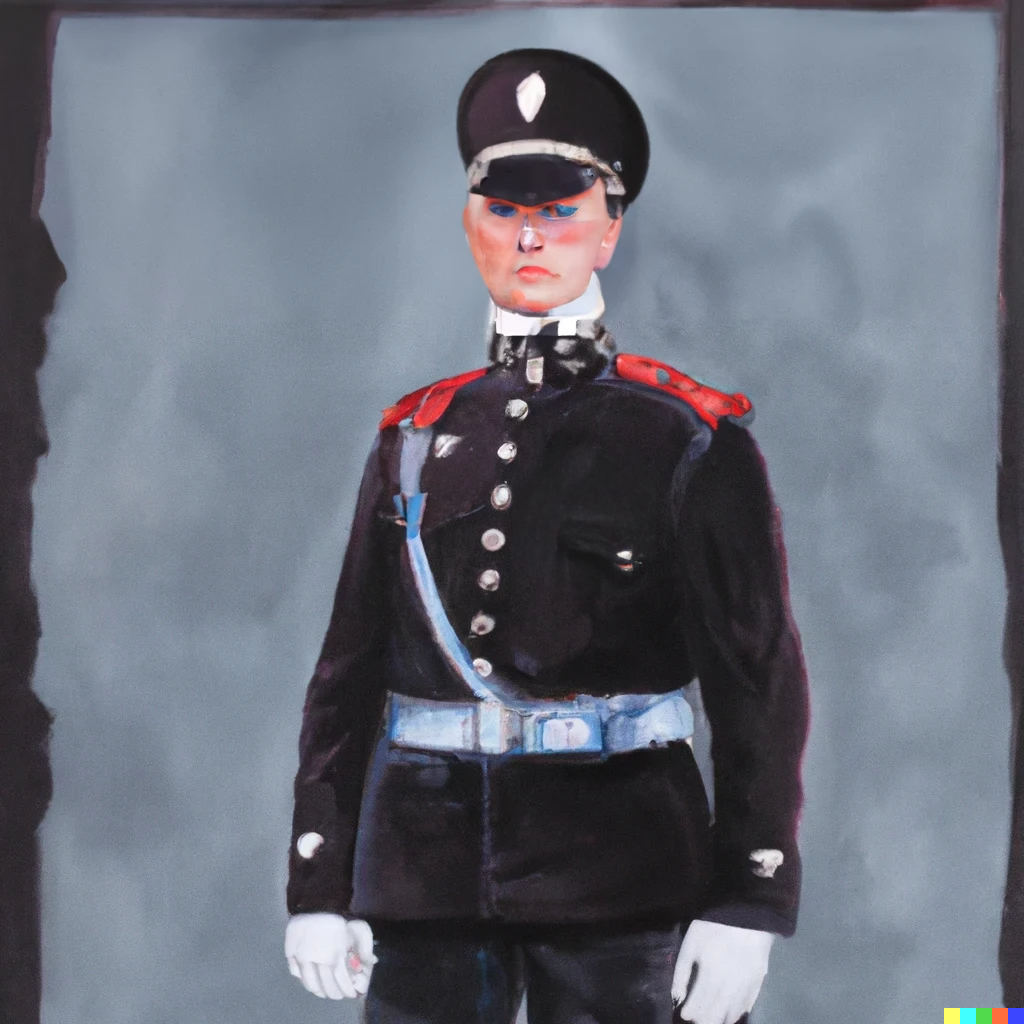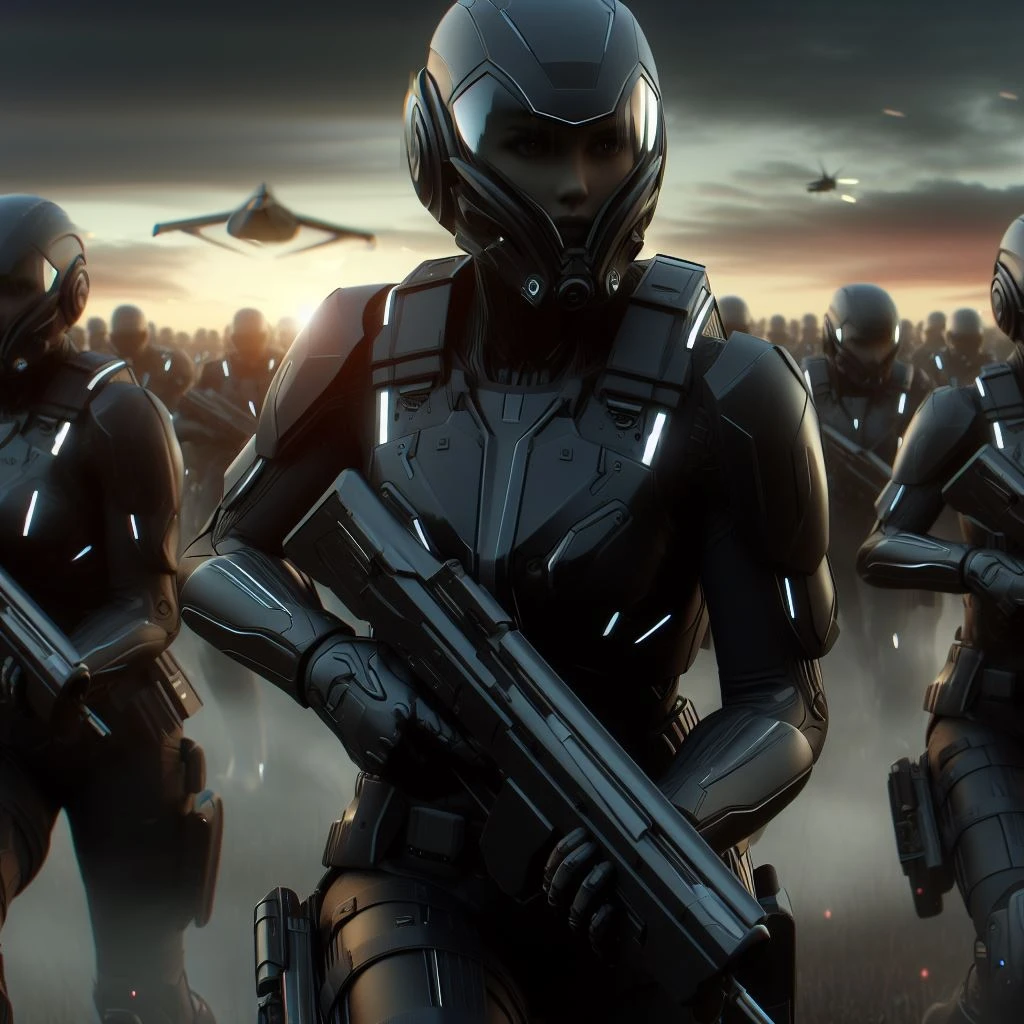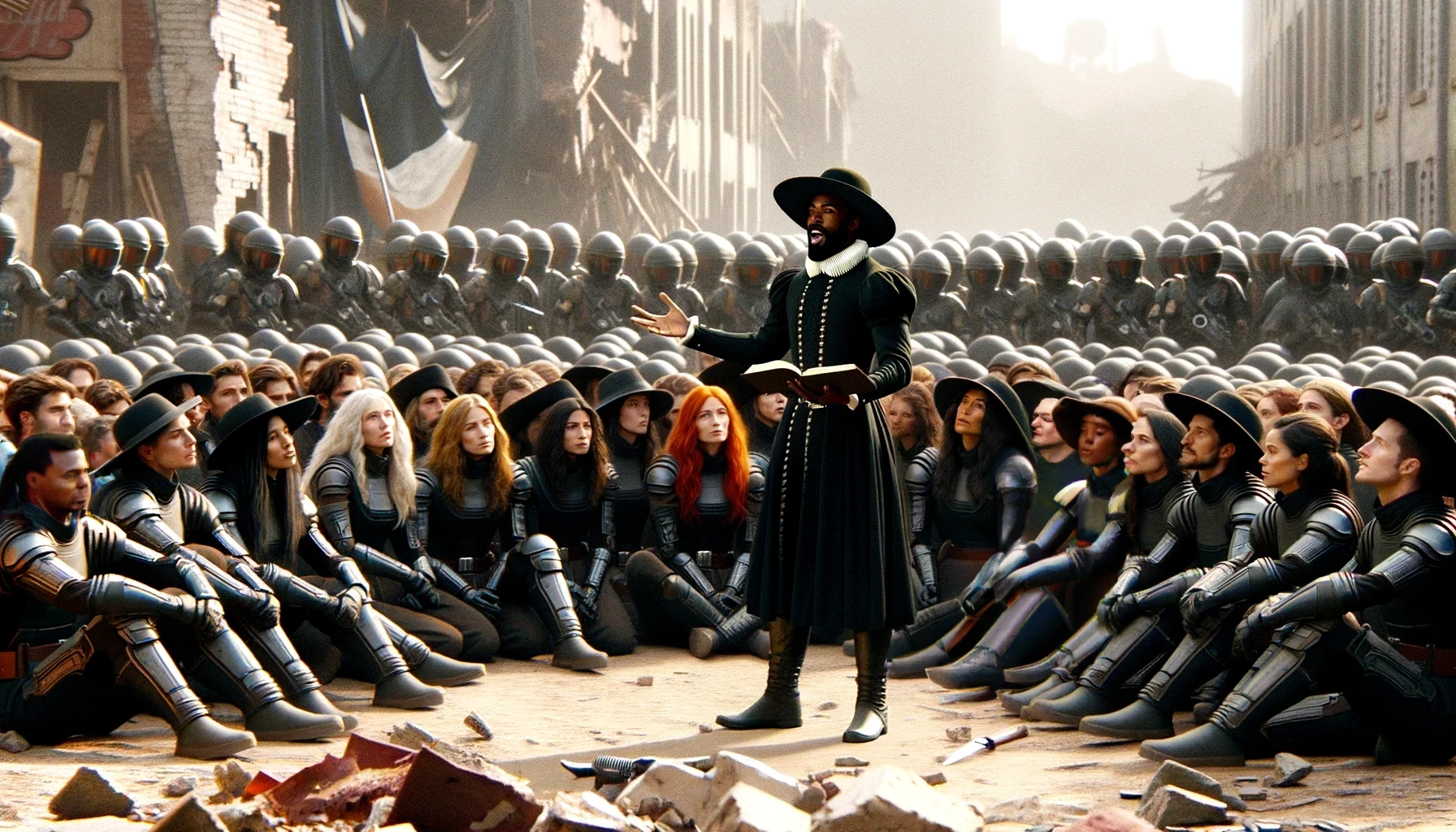Kilobo Lore!
The basic form of the Kilobo system PdF are the Civil Protection forces. They blend military and policing functions. Since the Imperial tithe rarely takes people rather than resources from Kilobo, for the most part service in the civil protection force is the only military experience a Kilobian will have. Where veterans are available though the Kilobian government does its utmost to repatriate them and have them serve in elite units, as officers, or as advisors and administrators within the PdF. It is thus a largely volunteer force whose officer corp and most elite elements typically have Guard experience, but most of whom will never have left the Kilobo system (barring the occasional recruit with experience from the merchant fleet).
The major planetary bodies of Kilobo are relatively lightly policed (the Arbites presence consists of a small office on Tramale, and it is generally seen as a low prestige working-retirement to be assigned there) and most disputes and petty crimes are dealt with in an informal matter at the level of Habblock or Parish. The Civil Protection force thus maintains little more than token representation in most places on all core worlds. Where they have large scale presence it is for guarding strategically or culturally important installations, ensuring there are no widespread civil disturbances, and providing a potential first-response delay and distract operation before concerted defence can be organised in case of invasion. The only exception to this is the quite heavily fortified world of Talee, where the bulk of the core worlds’ reserve militaries (including the Levellers) are formally based.
(The system protection force, the naval equivalent to the civil protection force, are based on Brer, and this is largely where the SDF and CPF coordinate their efforts. The permanent assets of the SDF are actually remarkably small in number even by the standards of a small system like this - what it relies on is a large and well equipped merchant navy who will reliably respond to call ups that place them at the service of Tramale in cases of emergency. Given that Kilobo’s wealth is owed to its status as a manufacturing and trading power its merchant navy is vast and well equipped, and thus far this system has more than met Kilobo’s naval needs.)
The bulk of the Civil Protection force are in fact deployed around the halo, for that is where they are needed (and why they are so militarised). The various mining and trade operations based in the halo are subject to predation from pirates, and in any case these regions attract the sort of malcontents and ne’er do wells who reject Kilobo’s drab pious collectivism and wish to strike out on their own. Pirates in this context can include xenos raiders who are well armed and tactically sophisticated, hence necessitating the high degree of military preparedness from the civil protection force in turn.
Civil Protection’s base of operations in the halo is theoretically the Anagh station, which had its military presence significantly beefed up ever since the first ork raid thereon. There is a significant military administration maintained there, as well as supplies and a sizeable garrison. But the de facto base of Civil Protection operations in the Halo is on Kurow Dunwɔtwe. The forces and administrative element necessary to maintain an occupation over restless potential-psychers living in fairly miserable conditions - as well as being in a position to aid Inquisition Black Ships when they make their inevitable rounds - has required a serious permanent presence on the planetoid. And whatever civilian administrative apparatus exists, everyone knows that the civil protection force on Kurow Dunwɔtwe amounts to its real government - and this is in no way answerable to the people there. In theory they answer to Anagh and through them Tramale. In practice they are the entirety of the law.
Between the anti-piracy/crime operations and suppressing rebellious elements on Kurow Dunwɔtwe even those elements of the Civil Protection forces that do not serve in the Guard will gain non-trivial combat experience. As mentioned, similarities in the sort of void anti-piracy operations they undertake is what led to significant cultural affinities between Elysian officers and those from Kilobo. The force is thus not comparable to a serious Guard regiment in its combat capacity, but nor is it entirely green and unable to seriously fight.

Earned his title "hound of Kulin" by how persistently
he would hunt down suspected heretics
In what follows we shall discuss the force organisation of a typical Civil Protection Team (the sub-unit of the Civil Protection Force assigned to a particular district) on Kurow Dunwɔtwe. Given that they are de facto the administration of the planetoid overall command will typically be handled by a political officer from the Kulinary School Commissariat. Under such a political officer will be at least a couple of infantry squads, perhaps a third if veteran elites are deployed in a team, to maintain regular patrols. And a number of rapid response light vehicles designed to establish an immediate presence at any flashpoints while providing an initial report to HQ re the evolving situation. Outside of Kurow Dunwɔtwe command would more typically be in the hands of a Civil Protection Officer, but beyond that this would be a typical civil protection team throughout the core worlds of Kilobo.
On Kurow Dunwɔtwe this minimal force will typically have preparations ready for two sorts of situation that arise reasonably frequently. First, a specialist siege breaking force designed to rapidly break down resistance in buildings or installations captured (often with hostages therein) by malcontents. This will typically consist of overwatch (sniper teams), hardpoints (mortar teams), bouncers (remote bombs to clear physical obstructions) and breachers. These breachers are elite teams who can deploy from heavily armoured Taurox Primes that will rush to exploit any openings created by the hardpoint or bouncers.


The second situation frequent to Kurow Dunwɔtwe is generalised civil unrest. Riots and disruptive mass protest frequently arise due to the poor living conditions, long running cultural and religious grievances, and (some suspect) active plotting by subversive elements. When this occurs the Civil Protection team will deploy the viscerators, informally known as Whitehats due to their very distinctive uniform. To be frank, these are thugs. They are recruited from the criminal underclass civil protection are otherwise opposed to in the Halo — the thought being that this not only takes them off the void lanes but also puts them to use doing the Emperor’s work by suppressing witches. Their dispositions are those of bruisers keen on unrestrained violence. These are people who can take a punch, and will not only punch back harder but also kill your family and burn your house down. It is they who maintain and deploy hellhounds to “sterilise” any gathering they feel has been tainted by psychers. Their officer corp are recruited from their own. This is necessary because while they are viewed as useful they are somewhat looked down upon by the Kilobian regulars. (Though apparently not so looked down upon that Anagh would actually stop making use of them and their methods.) And that distrust also means they typically have a political officer attached to keep watch on them to ensure their violent tendencies remain aimed at the Emperor’s enemies.
This then is a typical Kurow Dunwɔtwe civil protection team. Well armed infantry units made visible to show Tramale’s commitment to maintaining order. Rapid response units to contain and appraise flash points. Held in reserve both anti-siege specialists to diffuse hostage situations or prevent the loss of key infrastructure, and Whitehats willing to deploy terrible violence at a moment’s notice.
The Holy Emperor’s Corrective Unit are the most elite force in Tramale’s PdF. They first earned glory by serving side by side with Elysian regiments during the Damocles crusade, where it turned out their relatively similar pre-war experience (the Elysians typically engaging in void-ship boarding raids, the H.E.C.U. policing asteroid based compounds in the Halo) disposed them to similar operations. While perhaps not quite as distinguished as the Elysians in their service during this war certainly they did a good enough job for relations to be cordial. What is more, since the Elysians (infamously) had strained relations with their commissarial corp this gave the men something to bond over.
This legacy is carried with them to this day. The Kilobo PdF in general modelled their uniform and weaponry on the Elysian examples. The H.E.C.U. retain their reputation as a no-go zone for the commissars, even of the Kulinary school, that are otherwise ubiquitous in Kilobo’s PdF. Officer exchange programmes between Elysian PdF and the H.E.C.U. in particular are not uncommon — such are the advantages of two relatively wealthy civilised worlds able to indulge in such luxuries. What is more, a reasonably common post-retirement career for those who served with the H.E.C.U. is to exploit both their Kilobian SdF and Elysian connections to serve on, or even captain, profitable trade vessels linking the two sectors. Elysia has become Kilobo’s gateway to the Segmentum Solar, just as Kilobo is Elysia’s point of entrance into Ultramar.
But most of all what has been retained is a style, indeed a philosophy, of warfare. The preference is to launch precision strikes that knock out key logistical components of one’s enemy’s forces. Removing the enemy’s capacity to fight as quickly as possible and forcing a victory with minimal expenditure of life and resources. As one of their legendary commanders (Lieutenant Bonsu) remarked on being accused of cowardice by a more bloodthirsty Drookian commander — war is not glorious, victory is. The aim is to win in the name of the Emperor, and one achieves that if one’s enemies can no longer contest one’s ability to pursue whatever aims one launched the war to advance. There are no points for style, and it offends dour Kilobian sensibility to think that anything might be placed above securing victory for the Emperor. Rapid strikes, precisely targeted to remove the enemy’s capacity to fight; frugal and no nonsense, warfare fought in line with the Kilobian spirit.

as they take up garrison duty on a Halo Ring outpost
As such the H.E.C.U. take the time to train each of their members to a very high degree of readiness, and have a modus operandi they adapt to each new circumstance in painstaking detail. First, one identifies LZ’s, points of rapid ingress at which one can insert one’s troops and treat as a rallying point should things go wrong. These are cleared, secured, and used as a temporary base of forward operations from which one sends out sorties. Once these achieve their goals one may retreat back to the boats and leave. Or one has created the condition for reinforcements to reach one’s positions and more permanently fortify the LZs, leading to a more permanent occupation.
(As previously mentioned, at the end of the first Tyranic war Tramale sent some elite troops that had been held in reserve to back them up on their ill fated raid on the Prandium refugee vessel. This has become a permanent arrangement, with the so called Black Ops contingent of the H.E.C.U. remaining culturally distinct even as they are formally attached to the regiment. That said, their style of warfare is not fundamentally different so did not necessitate major reorganisation of the H.E.C.U.)
Evidently this involves a close relationship with aerial and naval assets, and as such the H.E.C.U. is based at Lunsi and recruit from Breachers in Civil Protection who excelled at void combat. Nowadays this style of warfare is mainly deployed against various hostiles inhabiting or predating upon the Halo. This has also meant they are de facto Tramale’s point of military contact with the Mo’zi. Rumours persist that despite explicit orders to the contrary from authorities higher even than Tramale, some fraternisation exists between H.E.C.U. and Mo’zi warriors. In fact the H.E.C.U.s fierce traditional hatred of Ethereals has led to shared camaraderie between them and the Farsight sympathisers. Tramale’s Xenoist faction thus think of the H.E.C.U. as their ace in the hole.
The Levellers are the mechanised infantry corp of Kilobo’s PdF and in many ways its most celebrated and iconic regiment. The H.E.C.U. are a more elite force and by their connections with the system defence force and merchant navy in many ways more economically and politically significant too. Given that it is through them that some diplomatic and military ties to the Elysian command are maintained, the H.E.C.U. rightly think of themselves as the only reason Kilobo is on the galactic map at all. But these same facts lead to their being undervalued — their elite status means their work is often clandestine so the public has no way of knowing about it. And from the point of view of the Imperial military the small Kilobian presence in various drop regiments is far from unwelcome, but at the same time where they are noticed at all they are viewed as somewhat akin to the Elysian’s little brother - something of a pleasing family resemblance, but not ultimately who you actually wanted to hang round with.
The Levellers on the other hand are distinctive, populist, and competent enough for the difference in elite status to not be easily noticeable. They are distinctive in that they are a mechanised force led by a preacher and they specialise in maintaining occupations. That is unusual for the Imperium let alone the Kilobo system. Their close work with the Kulinary School of the Commissariat leads to an unusually close and friendly relationship between officers and their advisors. They share the Kilobians cultural and religious distaste for the Mechanicus, meaning they do all they can to make do on their own technical knowledge — carrying out repairs and fixing up improvements with minimal machine priest oversight. For a mechanised unit this is remarkable in itself, but gives them a surprisingly robust ability to remain in the field when cut off from logistic support.
Their whole style is populist. They aim to win over hearts and minds, and they do that through maintaining a shockingly democratic style while also maintaining a strict piety. Their officers are elected - and that friendly relationship with the Commissariat even goes so far as to Commissars feeling some need to respect consensus opinion among the rank and file.

These sentiments are both aided by the presence of elite shock troops trained in specialist schools run by the Catachan immigrant population of Kofoglin. Their habit of electing their officers and not allowing Commissars to get too huffy fitting reinforced by the sort of attitude Catachan training tends to instil. Levellers are also known for being incredibly pious - the regiment is always led by a preacher. When not engaged in active combat independent prayer groups always record high daily attendance. Their regimental choir has an annual release of an album (with proceeds to Ecclesiarchal alms-giving funds) wherein they sing various pious favourites. This release is typically one of Kilobo’s cultural highlights. All this of course enamours them well to the population, who see them as representing all the best virtues of their system — and it helps that there is a strong expectation of engagement with the civilian population. Indeed it is not unusual for an officer to only really make their mark in the regiment once they have shown they can be an effective pamphleteer whose charisma, evident piety, and persuasive rhetoric and argumentation, can sway otherwise hostile populations to the emperor’s cause.
And they are competent. Their fighting style was described above, and it remains effective - indeed the only thing anyone in the Imperium would ever seriously consider the Kilobian military as expert on is the sort of rapid response occupation maintenance the Levellers practice. (This complicates their relationship with the H.E.C.U. - man for man the H.E.C.U. are the more elite force, but their specialisation is in something the Imperium has plenty of resources to draw upon. The comparative advantage of the Levellers' more niche skill often gets them more attention, exacebating rivalries.) They often recruit from those who excel in the Breacher units, especially with experience of ground-based urban warfare in Kurow Dunwɔtwe. As mentioned, the world they “pacified” during the Damocles Crusade was unusual in remaining loyal and at a higher tithing grade even after the Tau counter-push. An unglamorous but meaningful success earned them real respect from Ultramar strategic command, and when three of the Emperor’s Angels visited Kenra subsequent to the Plague War this sentiment was passed along — these terse words of praise remaining a point of both regimental and system wide pride. Their ad hoc rescue of the working population on XV988 was also incredibly popular and the subject of much official and word of mouth propaganda. (Even though Kilobian system command largely takes the information gleaned by that engagement to be incredibly worrying about their overall capacity to resist the Sautekh, it was a strategic victory given the quite limited war aims.) If the Xaviarists ever need to deploy serious military force, the pious Levellers will no doubt be ready to strike.
